8 Must-Know Statistics About Public Procurement


Public procurement is all about government agencies and various organizations in the public sector procuring works, goods, and services from companies of all sizes.
It may sound simple in theory, but does everything really go so smoothly in practice?
We’re here to offer some answers to that question.
In this article, we’re bringing you 8 statistics that will help paint a fuller picture of public procurement.
You’ll find out how significant it is in different economies, how it is affected by corruption, what prevents private companies from participating in it, and how it relates to sustainability.
So, if any of these topics have sparked your interest, read on.
According to the Public procurement in the EU report from 2023, 14% of the gross domestic product of the EU member countries is spent on public procurement every year.
This translates to €2 trillion, making public procurement one of the main drivers of employment and economic growth within the European Union.
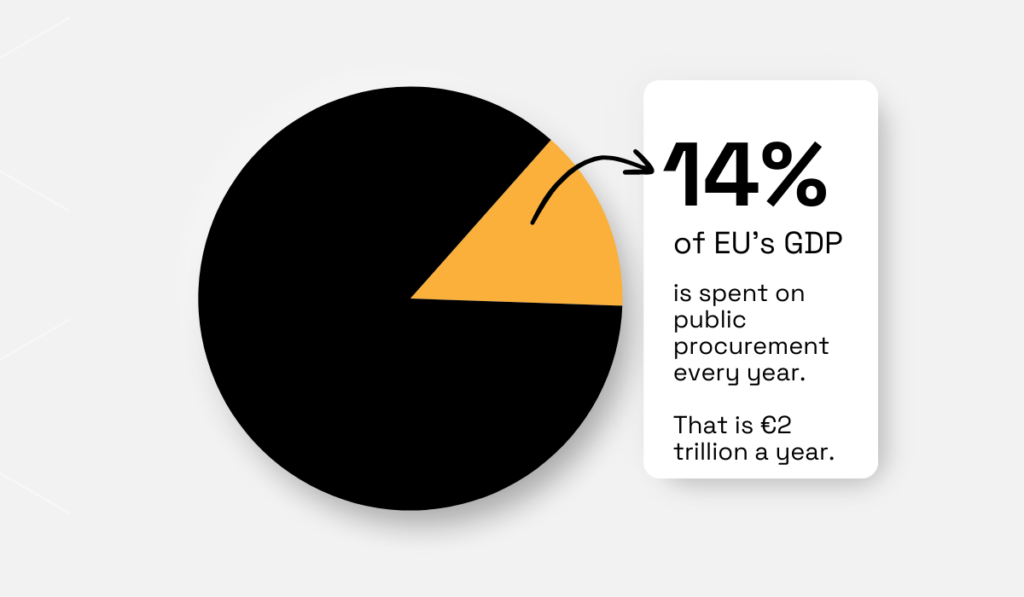
Illustration: Veridion / Data: European Court of Auditors
In order to make sure that the competition between businesses is fair, the EU law establishes what they call “minimum harmonised public procurement rules”.
These rules help make sure that EU governments and public institutions follow the agreed-upon workflows when it comes to purchasing goods and services.
Why is this important?
Because, as the European Commission explains, procurement is a powerful tool for providing EU citizens with access to high-quality public services, but also for creating a better economy overall.
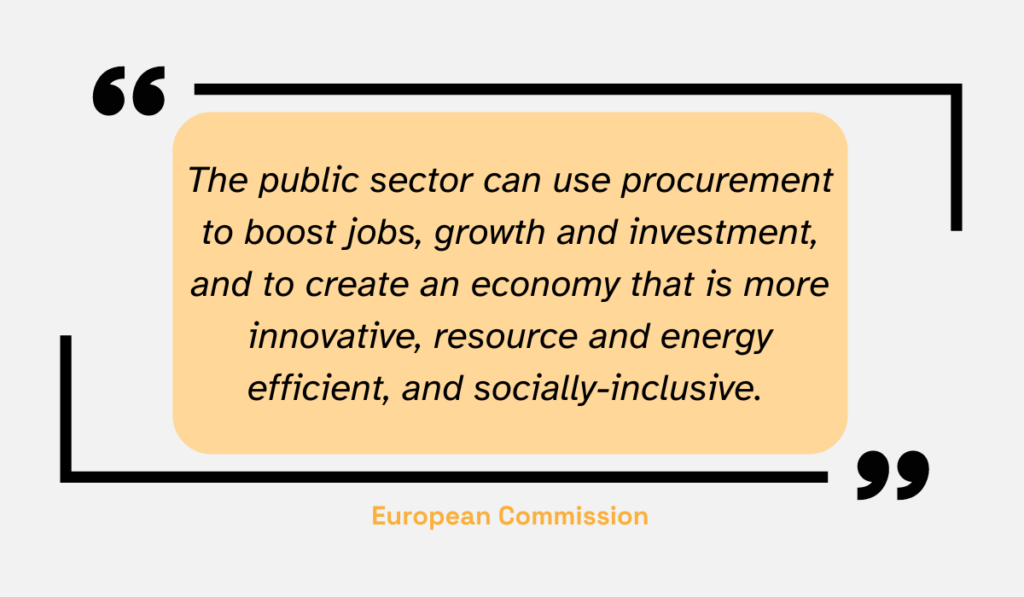
Illustration: Veridion / Quote: European Commission
However, some members of the European Parliament criticize the way that this substantial amount of the EU’s GDP is being spent, stating that the public authorities are “awarding public contracts to private companies solely based on the cheapest offer.”
And the findings included in the Communication from the Commission to the Institutions, unfortunately, confirm this to be true.
In 55% of procurement procedures, having the lowest price was reported to be the only criterion for awarding a contract.
And that’s not all.
Namely, the aforementioned report from the European Court of Auditors (ECA) showed that over 80% of contracts in 8 member countries were awarded to the lowest bidder in 2021.

Source: Euro News
These figures go to show that there is a need for a mindset shift in the realm of public procurement.
Public procurement professionals have the power to do much more than just automatically opt for the lowest price of goods and services, believes former Italian prime minister Enrico Letta:
“The public procurement market should be leveraged as a key instrument for promoting social value, enhancing social capital and aligning with the EU’s ambitions for green and digital transformations.”
To get to that goal, it is integral to improve upon the current public procurement processes and ensure they align with the broader EU goals and policies, making the most of that €2 trillion.
The next statistic on our list comes from the same ECA report and concerns the topic of single bidding within the EU single market between 2011 and 2021.
As the name suggests, “single bidding rate” is a metric that measures the percentage of contracts awarded where only one company submitted a bid for a specific public procurement.
And, as the report shows, this rate has nearly doubled over the course of the observed 10-year period.
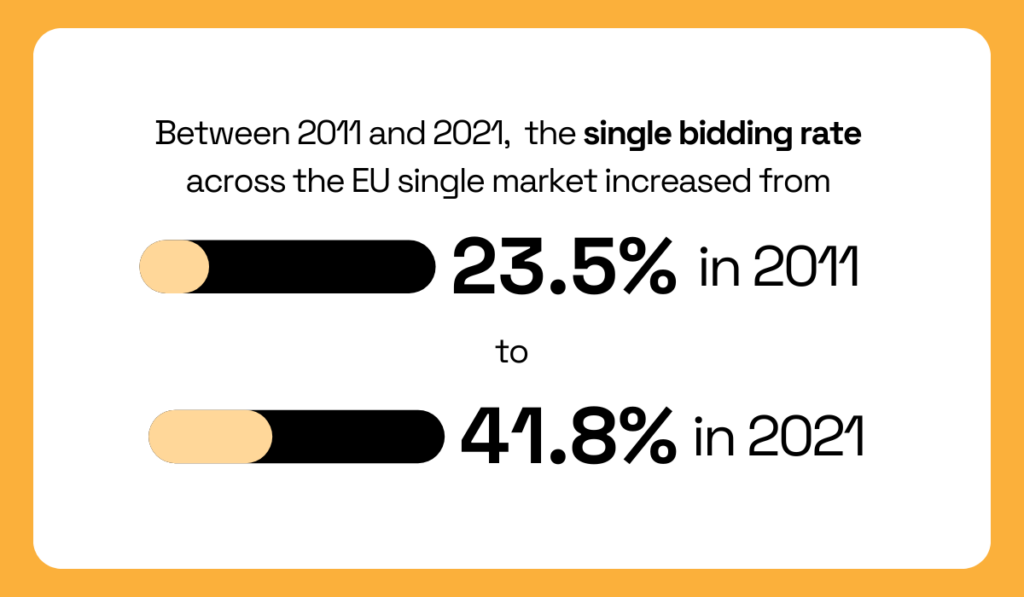
Illustration: Veridion / Data: European Court of Auditors
Single bidding rates above 20% are considered high in the EU, meaning that this number went from being high in 2011 to even higher 10 years later.
Topping the list of countries where single bidding was high in 2021 are Slovenia, Cyprus, Poland, Czechia, and Hungary, according to the ECA Dashboard.
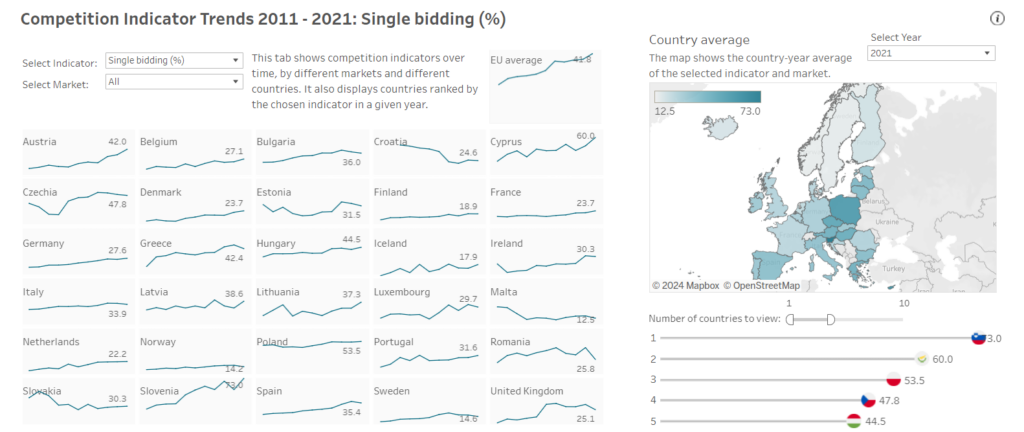
Source: European Court of Auditors Dashboard
Furthermore, the increase in the single bidding rate was present across all observed economic sectors between 2011 and 2021, with the construction sector having the lowest single bidding rate.
On the other hand, repairs, medical equipment, transport equipment, and health services experienced a high single bidding rate of over 40% during the same period.
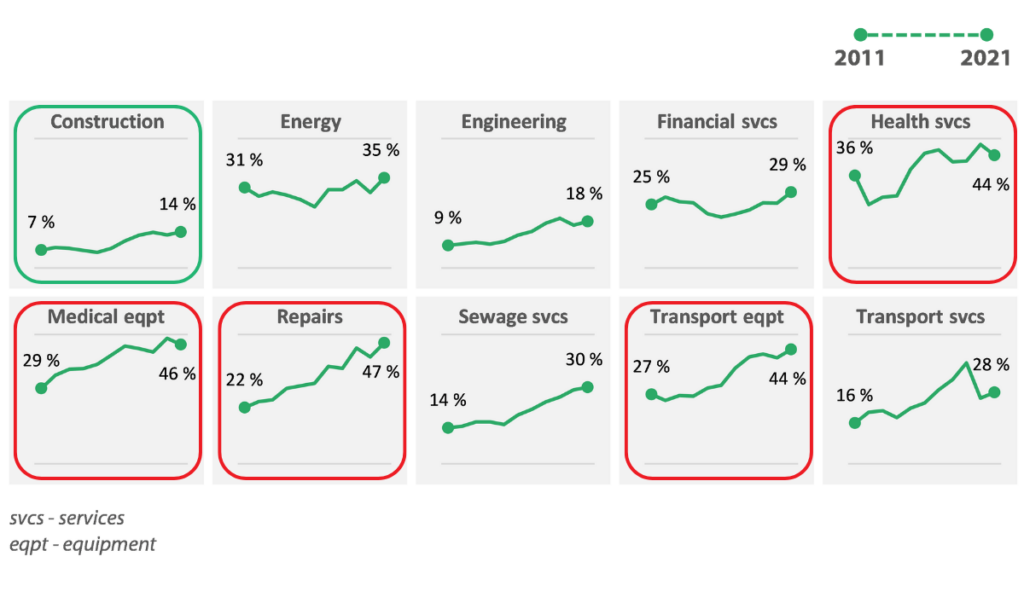
Source: European Court of Auditors
Based on these numbers, it becomes clear that the competition in public procurement has significantly declined.
To find out what reason lies behind this and complement their data analysis, the ECA surveyed individuals involved in public procurement.
When asked for their opinion on what contributes to single bidding, more than 40% of the respondents cited “restrictive criteria or requirements.”
This indicates that single bidding rates could be lowered through simplifying public procurement procedures.
According to the 2021 SME Needs Analysis in Public Procurement report published by the European Commission, 57.5% of small enterprises across 5 EU member countries have participated in public procurement in the past.
24.3% of them have no interest in doing so again in the future.
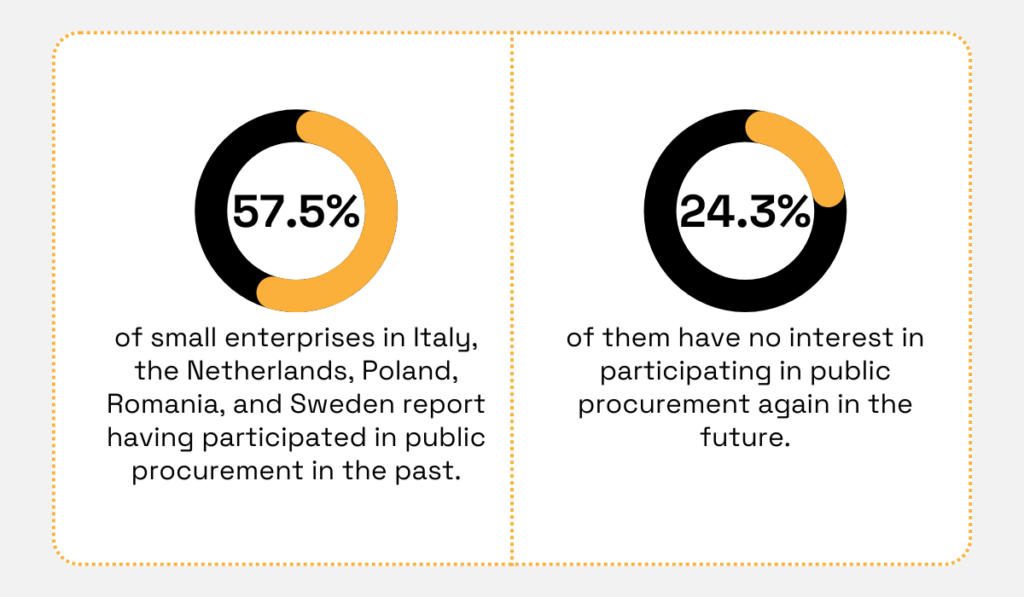
Illustration: Veridion / Data: European Commission
The small enterprises included in the research came from Italy, the Netherlands, Poland, Romania, and Sweden.
This selection, explains the report, “ensured a balance of geography, EU accession, population and economic size, as well as diverse national approaches to PP,” i.e., public procurement.
Out of all the small enterprises competing for public contracts, 80% of them were successful.
Interestingly, their success rate is lower than those of micro (83.2%) and medium-sized (89.7%) enterprises.
One might assume that this is—at least partially—the reason why almost a quarter of the surveyed small enterprises don’t intend to participate in public procurement again.
However, the report provides insight into why that is actually the case.
Out of 24.3% of small enterprises not wanting to partake in public procurement again, 66.7% of them explain that this is because it is too complicated.
The remaining 33.3% find that their repeated participation is not needed.
All of this might also be linked to the fact that small enterprises have the lowest knowledge of public procurement principles and tend to use Google the most to find procurement opportunities.
The table below provides a comprehensive overview of how small enterprises fare in terms of experience and knowledge in public procurement.

Source: European Commission
In comparison to micro and medium enterprises, small enterprises have the lowest level of knowledge about public procurement principles and the lowest success rate, while also having the highest perception that public procurement is too complicated.
Given the fact that small and medium enterprises are considered the backbone of EU’s economy, it is safe to say that investing more in education on how public procurement works would be a win for everybody.
This next statistic from a study commissioned by the European Commission and reported by UNESCO informs us about the level of corruption in public procurement.
Namely, the study found that 18% of the overall procurement expenditure can be attributed to inefficiencies in public procurement.
Of that, two thirds—or 13%—is linked to corruption.
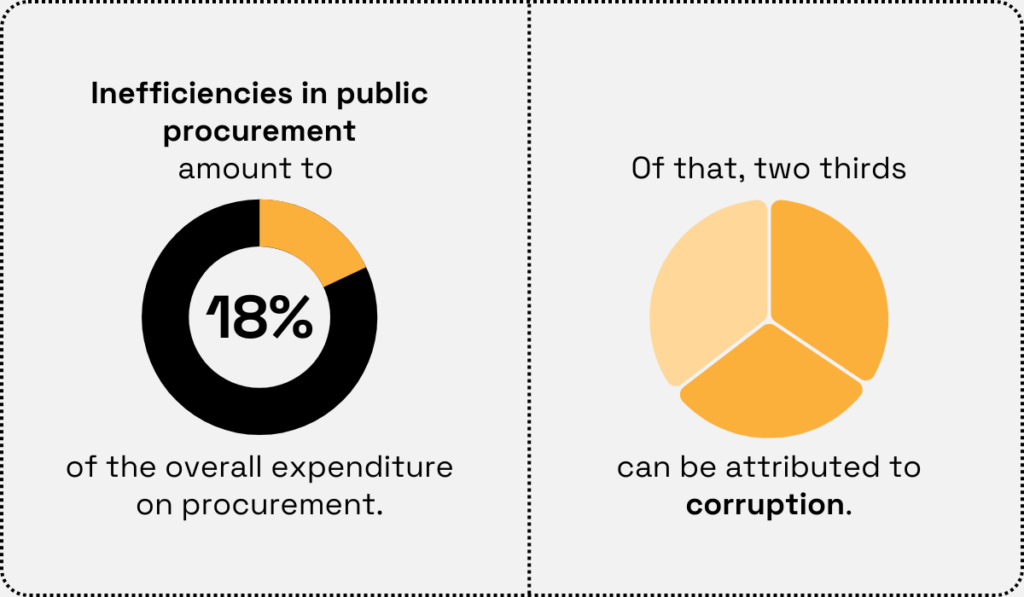
Illustration: Veridion / Data: PwC & European Commission
But what constitutes corruption in public procurement?
The U4 center at the CMI Research Institute in Norway, focused on studying how corruption affects development, provides a helpful breakdown.
Here are only some of the ways in which corruption can manifest itself:
Naturally, this begs the question: What can be done to fight it?
The answer might lie in AI anti-corruption technologies (AI-ACTs), explains Carolina Gerli, Visiting PhD Researcher at Hertie School’s Centre for Digital Governance.
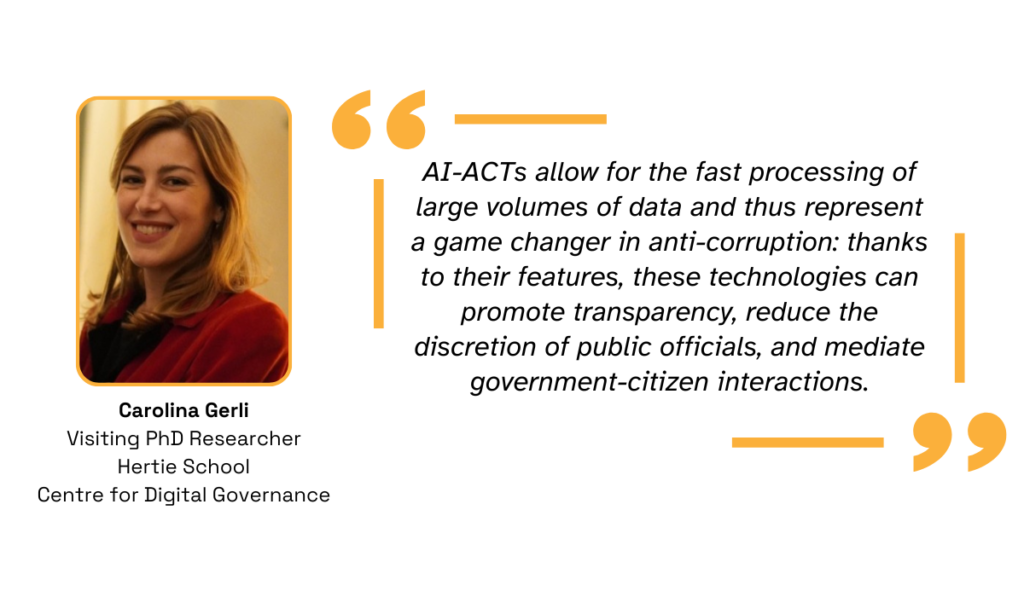
Illustration: Veridion / Quote: Hertie School
AI, she explains, goes beyond being just a preventive tool for predicting corruption patterns.
It can also detect fake suppliers and, with the help of machine learning, other issues that scream “corruption.”
One technology that leverages the power of AI and machine learning to find the best suppliers is our supplier sourcing enabler, Veridion.
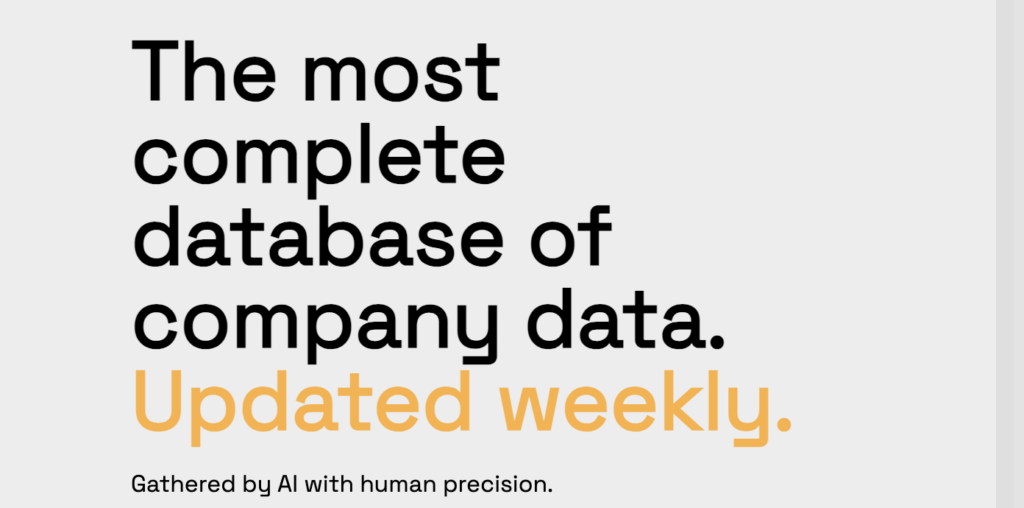
Source: Veridion
Veridion provides procurement professionals with access to a vast database of global suppliers that is updated on a weekly basis.
But we don’t stop at supplier discovery and sourcing.
Our real-time alerts will notify you of any changes in your suppliers’ business activity, thereby allowing you to mitigate supplier risks—including corruption red flags.
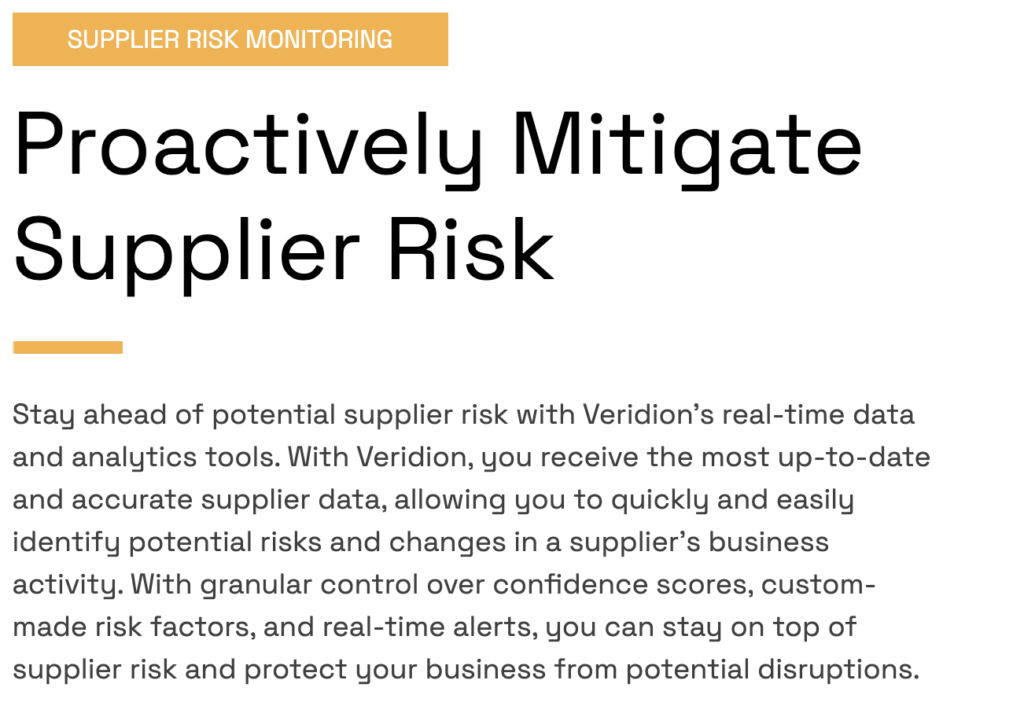
Source: Veridion
While AI isn’t yet widely adopted in public procurement, there is no denying that this powerful technology has the potential to complement the current strategies for beating corruption.
Continuing in the same vein, the World Bank’s publication entitled Evidence on Public Procurement from Firm-Level Surveys provides some more data on corruption in procurement.
Unlike the reports we’ve discussed so far, which focused only on the European Union, this publication gives us a fuller picture of the state of public procurement, as it covers over 150 countries worldwide.
It reports that 21% of companies that tried or managed to secure at least one government contract in the year prior to the survey stated that “firms similar to theirs typically make informal payments or give gifts to secure government contracts.”

Source: World Bank
The survey goes on to reveal that this percentage is fairly high in:
In contrast, 14% of companies in Latin America and the Caribbean and 7% of those in Europe and Central Asia region report this expectation being standard.
The report doesn’t provide statistics on how North American countries fare in this regard.
However, it is worth noting that, in June 2024, the U.S. Supreme Court ruled that it’s not a crime for local and state officials to accept gifts from donors who have previously won lucrative contracts thanks to their involvement.
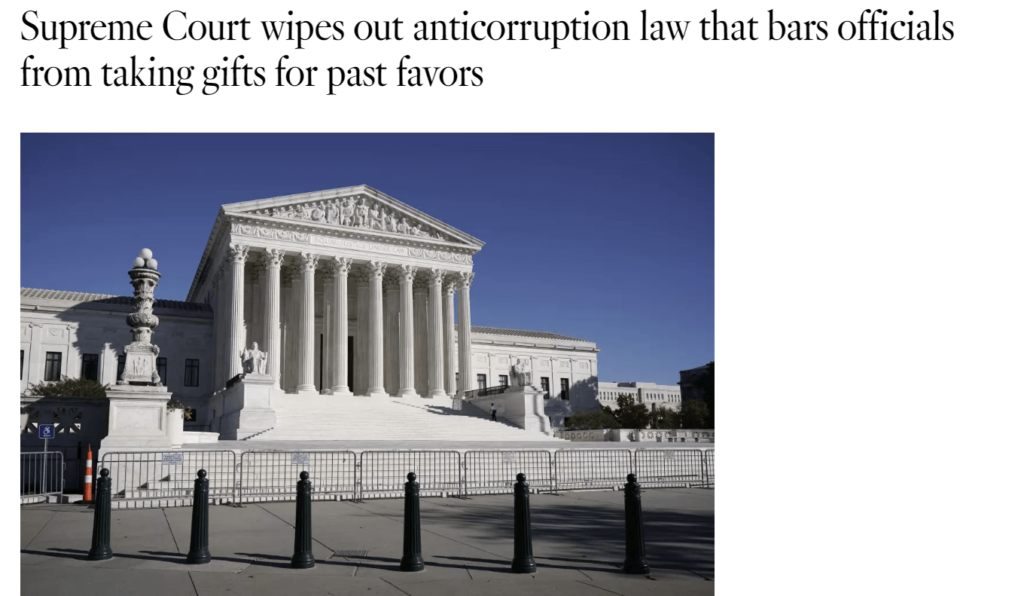
Source: Los Angeles Times
The effects of this decision remain to be seen.
However, feeling like there is no way for them to secure a government contract unless they give gifts could potentially discourage companies from participating in public procurement at all, thus creating an imbalance in contract distribution.
The same World Bank survey brings us another interesting statistic—this time about the level of involvement of private companies in public procurement.
On a global level, only 18% of private companies choose to participate in public procurement.
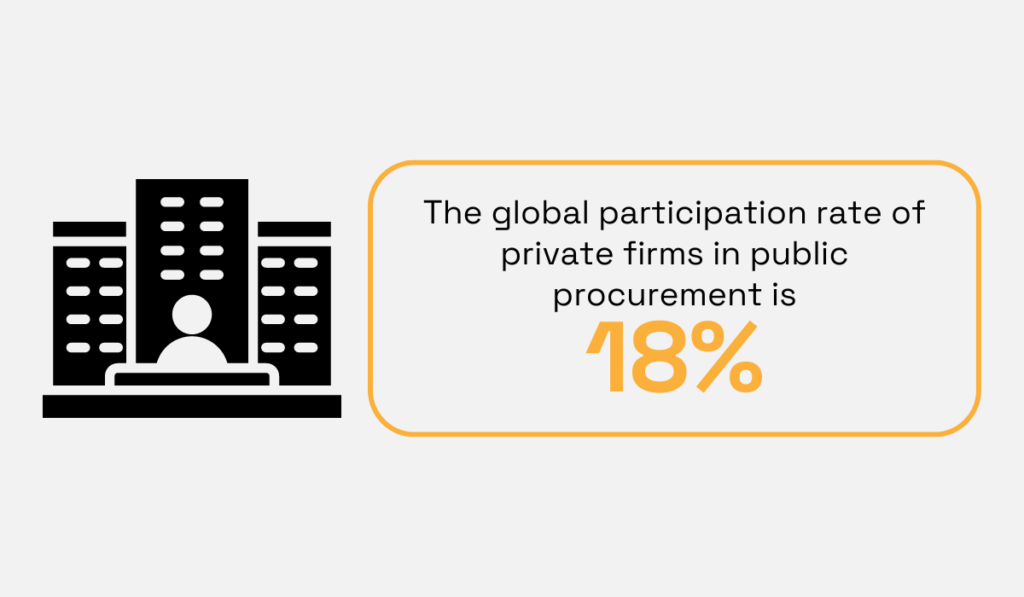
Illustration: Veridion / Data: World Bank
The report goes on to inform that, in 60% of the surveyed countries, less than 20% of private companies are partaking in public procurement activities.
If we look at the participation rates across different regions, the numbers look like this:
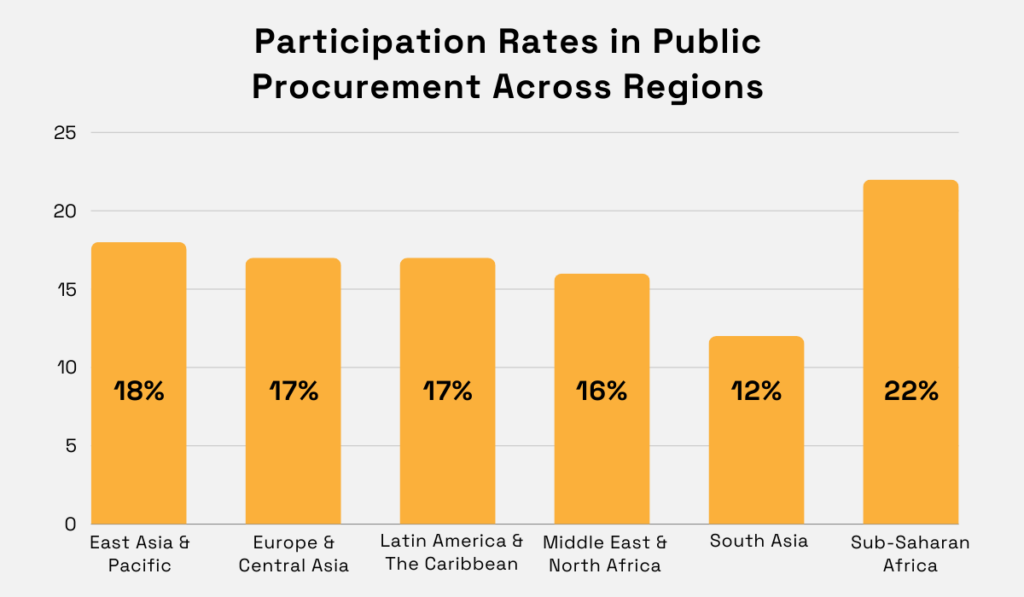
Illustration: Veridion / Data: World Bank
As you can see, the average participation is between 16% and 18% across the majority of regions, with South Asia having a lower participation rate of 12% and Sub-Saharan Africa a higher one at 22%.
But what do these differences depend on?
The report elaborates on this, explaining that there is a variety of factors that influence companies’ decision to participate—or not participate—in global procurement.
Some of them include:
And it makes sense, really.
Companies in countries with an overall well-regulated, transparent public procurement system, might naturally gravitate more towards trying to secure government contracts.
With that in mind, it is clear that fostering an environment where information about public procurement is publicly available has the potential to motivate private companies to participate in it.
The next statistic we’re going to look at focuses on what prevents companies from participating in public procurement, and we’ll be zooming in on Poland in particular.
In Poland, a staggering 81% of companies surveyed between May and June 2021 expressed that administrative procedures preceding the signing of a contract were an obstacle to taking part in public procurement.
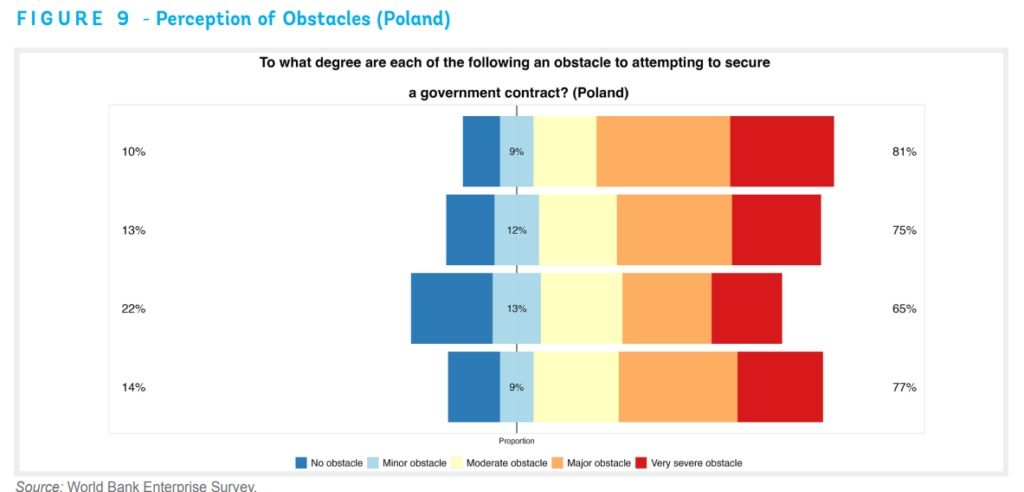
Source: World Bank
This number is significantly higher among companies in Poland than those in the other two countries that were asked the same question—Croatia with 47%, and Romania with 38%.
On a more granular level, the main administrative obstacle for companies in Poland before contract signature is the length of the process after bid submission (40%).
And, as it turns out, it is not only companies located in Poland that find it challenging to participate in public procurement in this country.
According to Dentons, one of the world’s largest global law firms, foreign contractors seem to be just as discouraged by the complexities of Polish public tenders.
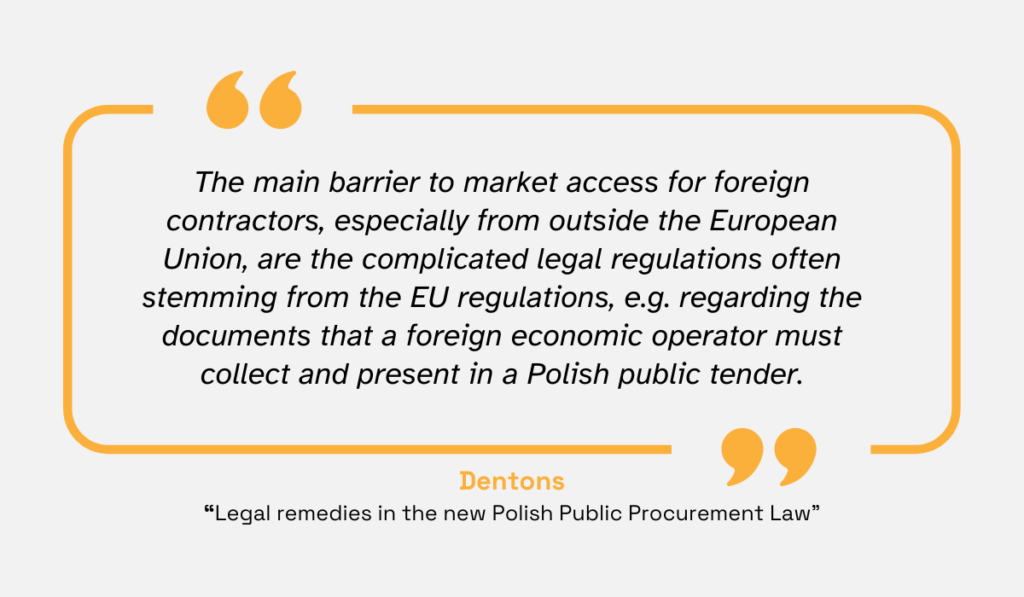
Illustration: Veridion / Quote: Dentons
These findings offer a straightforward answer as to what can be done to increase the number of companies willing to participate in public tenders.
In short, it would be beneficial to simplify the administrative processes wherever possible, as well as provide easy access to the exact steps that need to be followed in order to partake in public procurement.
After all, knowledge is power, and access to knowledge is empowering.
We’ll wrap up this article with a statistic that illuminates the impact of public procurement activities on the environment.
According to the 2022 white paper entitled Green Public Procurement: Catalysing the Net-Zero Economy and published by the World Economic Forum, public procurement is responsible for 15% of global greenhouse gas (GHG) emissions.
This translates to 7.5 billion tonnes of CO2 released into the atmosphere every year.
More precisely, public procurement is directly responsible for 3% of GHG emissions but indirectly responsible for another 12%.
Why? Because the companies from which the goods and services are procured also release emissions.
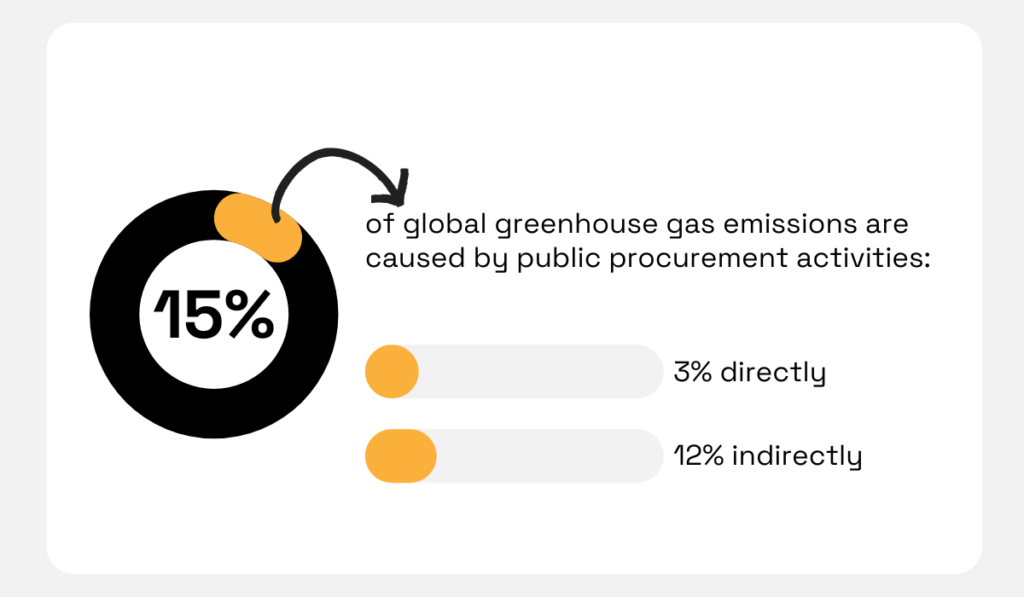
Illustration: Veridion / Data: World Economic Forum
The majority of the emissions caused by public procurement activities are the responsibility of only 6 industries:
The fact of the matter is that procurement is a big part of public spending.
Therefore, public procurement professionals have the power to make decisions that will promote a more sustainable approach to not only procurement but the economy in general.
Børge Brende, President of the World Economic Forum, explains that making public procurement more green benefits everyone, although many still see it as a financial burden.
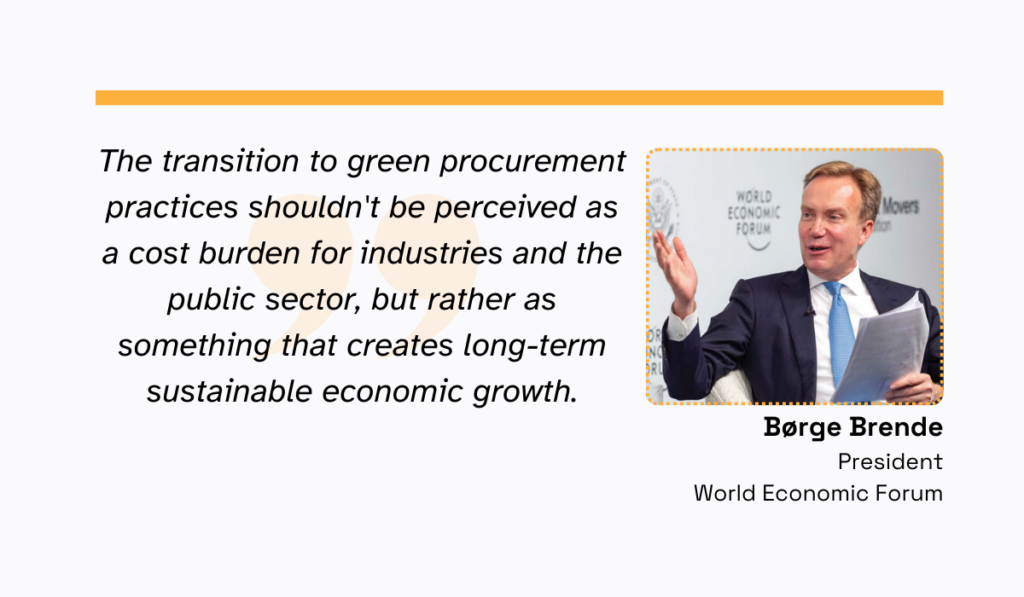
Illustration: Veridion / Quote: World Economic Forum
Yes, making public procurement greener is likely to be costly for governments, but the benefits of it far outweigh this drawback.
The white paper goes on to explain that decreasing the GHG emissions alone is going to:
Global governments have the influence and power necessary to lead the way towards a more climate-friendly, sustainable future.
So, perhaps the benefits outlined above can serve as inspiration for taking the first steps in that direction.
We hope that this compilation of statistics on public procurement has provided you with some valuable insights.
Now you know what public procurement looks like within the EU and globally, how it affects our planet, and what hinders companies from participating in it.
Overall, it appears that the way public procurement works is still somewhat of a mystery to many companies across the globe.
However, by making the processes more transparent and straightforward, a future where more and more companies choose to participate in it isn’t impossible.